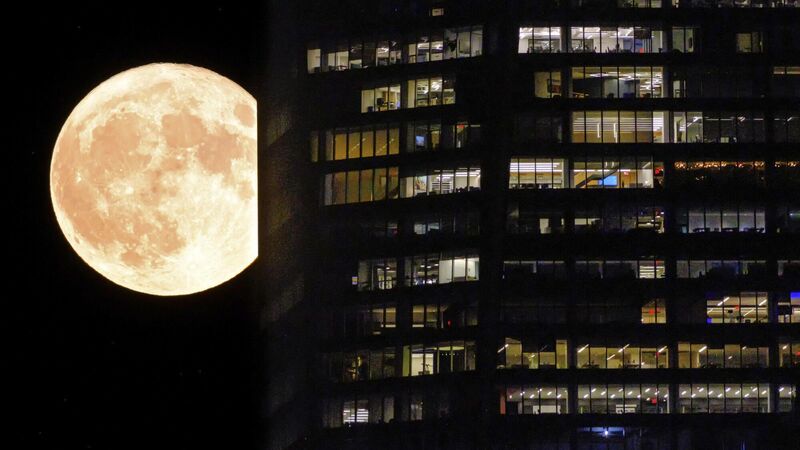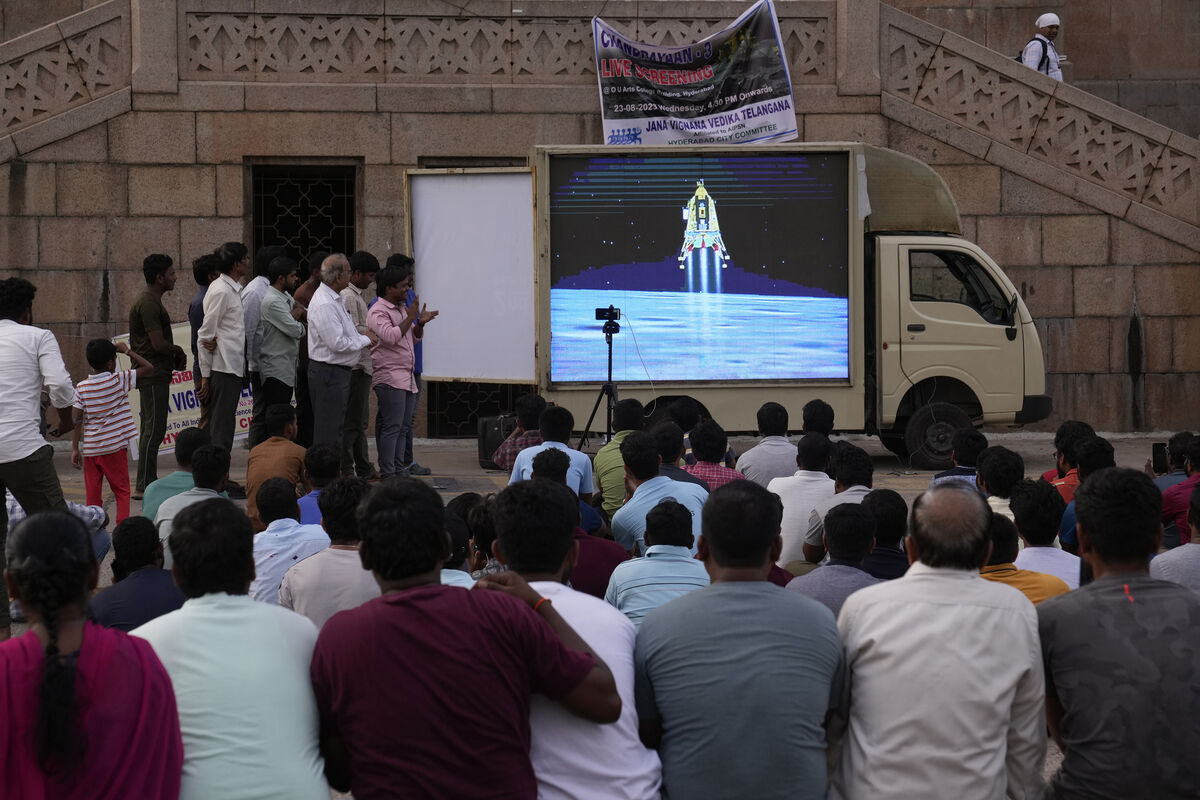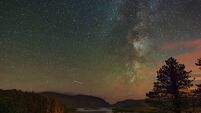Sky Matters: What we learned about the Moon from India and Russia's space race

A supermoon passes behind the illuminated windows of a New York City skyscraper, Aug. 1, 2023. Pic: AP Photo/J. David Ake
In August we witnessed some of the highs and lows of lunar exploration.
Through an unplanned coincidence of timing, India and Russia were scheduled to land two spacecraft on the Moon within a couple of days of each other.
A wholly unintentional “space race” had begun. Both missions were targeting the lunar south pole, a region never before explored except by spacecraft in lunar orbit. Both missions carried a multitude of scientific instruments, but the standout objective was to seek further evidence for, and information on, the existence of water ice.
Previous missions, including an earlier orbiting Indian mission, had found pretty definitive evidence that ice exists in craters which are deep enough to provide permanent shade from the glare of the Sun.
Without going down to the surface, however, it’s impossible to tell how much ice there might be, how deep it might be found, whether it is in icy clumps or powder-fine crystals. If lunar ice is to be useful for astronauts as a source of water, or a source of fuel for their rockets, then we really need to know the answers to such questions. (Water is useful as a rocket fuel because it can be broken into oxygen and hydrogen, both already used in rocket engines.)
Craters providing the requisite shade to keep “ice as ice” can only be found where the Sun never rises high in the sky. For the Moon that means the south pole. It also means the North Pole, but that has much fewer craters, so there simply aren't enough shady craters to make an expensive space journey worthwhile.
For all its attractiveness as a potential source of ice, the South Pole is a region characterised by a challenging and dangerous terrain, pockmarked by craters ranging in size from a few metres to tens of kilometres, surrounded by the debris that was gouged out of the lunar surface when they were initially formed.
Small boulders invisible from an orbiting craft can assume catastrophic dimensions to a landing craft in the moment before touchdown. Having travelled across the 384,000km chasm between the Moon and Earth, the hopes of a project team and perhaps an entire nation can be dashed in that last metre.

Fortunately for us, using autonomous technologies the Indian Chandrayaan-3 lander executed a perfect landing, carefully avoiding a mission-ending small crater only a few metres away. With a budget of €70m, India had become the first nation to land at the lunar south pole.
Soon after touchdown, Chandrayaan-3 deployed its rover Prgyaan which, moving at about 1cm per second, has already discovered that the temperature at the surface is 50 degrees centigrade, falling to -10 degrees centigrade just 8cm beneath.
This behaviour is a surprise, so there are things about South Pole soil that already needs further investigation. When you consider that NASA plans to land people there by 2025, the more they know about conditions underfoot the better they can prepare for eventualities.
In the longer term, choosing the location for a permanent base inhabited by humans will require us not only to find water ice, but a lunar soil that is also useful as a building material. So the stakes are high.
As we move towards the Autumn Equinox here on Earth, when day and night are of equal length on September 23, we are reminded that our home planet’s axis is tilted at 23.5 degrees – otherwise we would have no seasons and no equinox. But the Moon’s axis is only tilted 2 degrees, meaning there are effectively no seasons there. In turn, that allows for certain craters at the south pole to be in permanent shade.
If that was not the case there would be no water ice. And that would make the prospect of permanent habitation all the more difficult. Sometimes, it seems, the Universe can be kind.
Finally, an early word that Oct 4 – 10 is Space Week. Go to www.spaceweek.ie for details on how to get involved!







